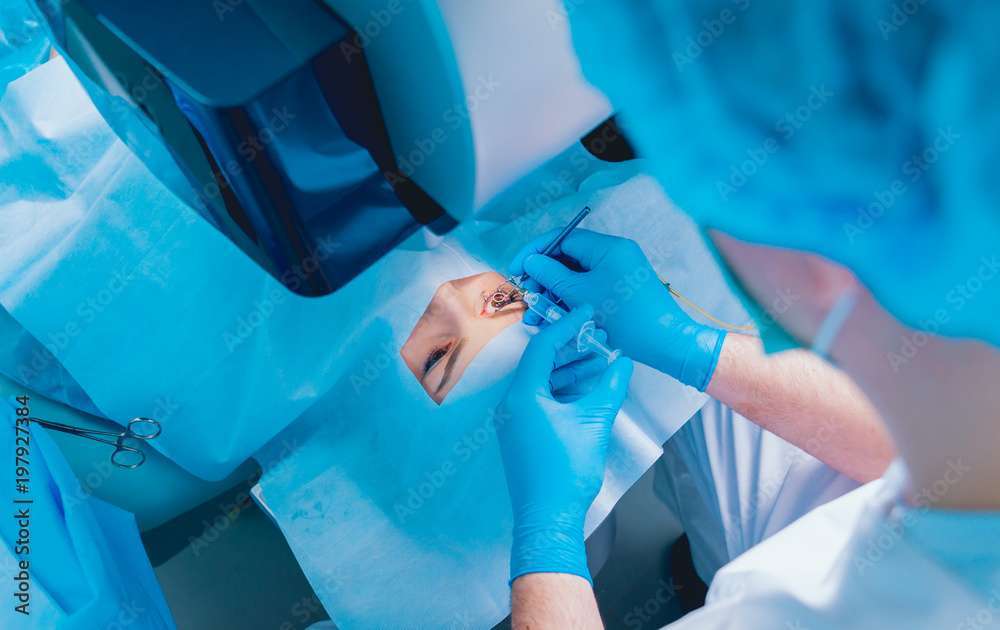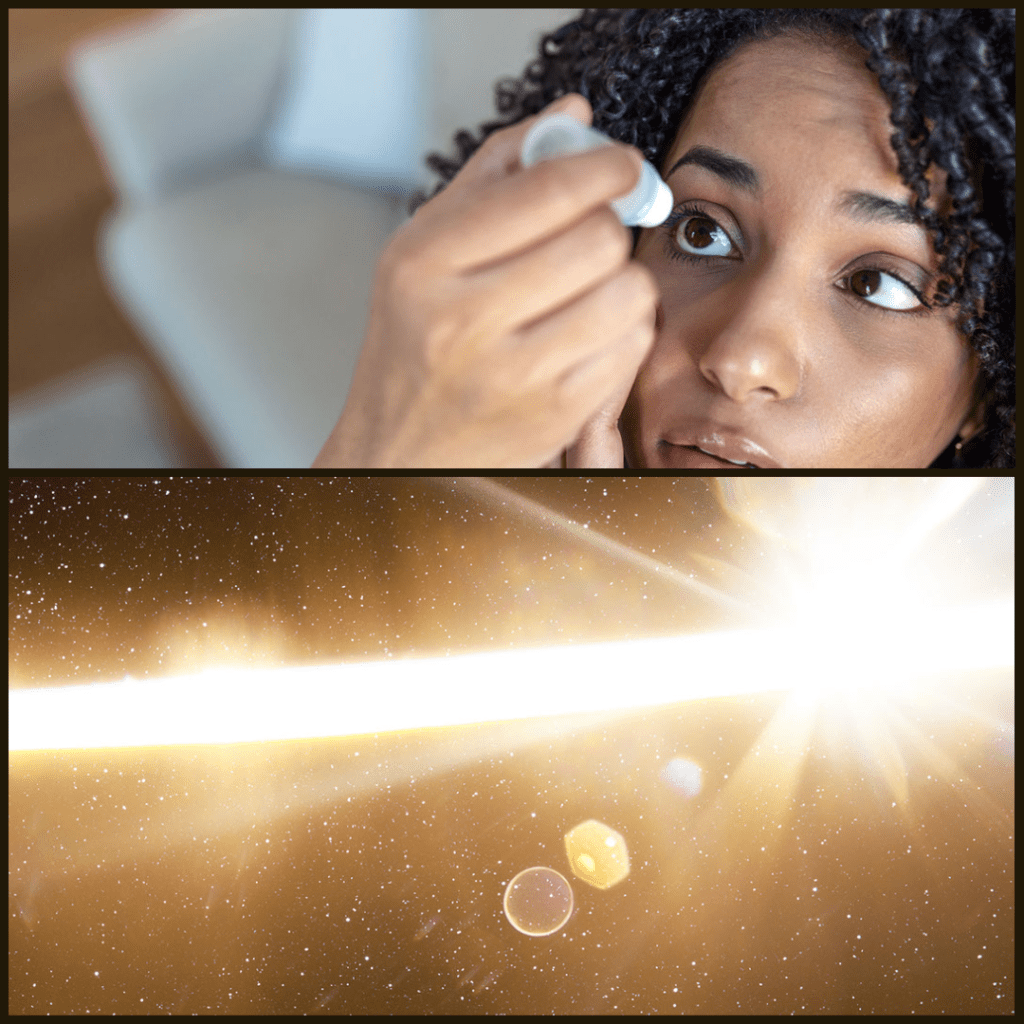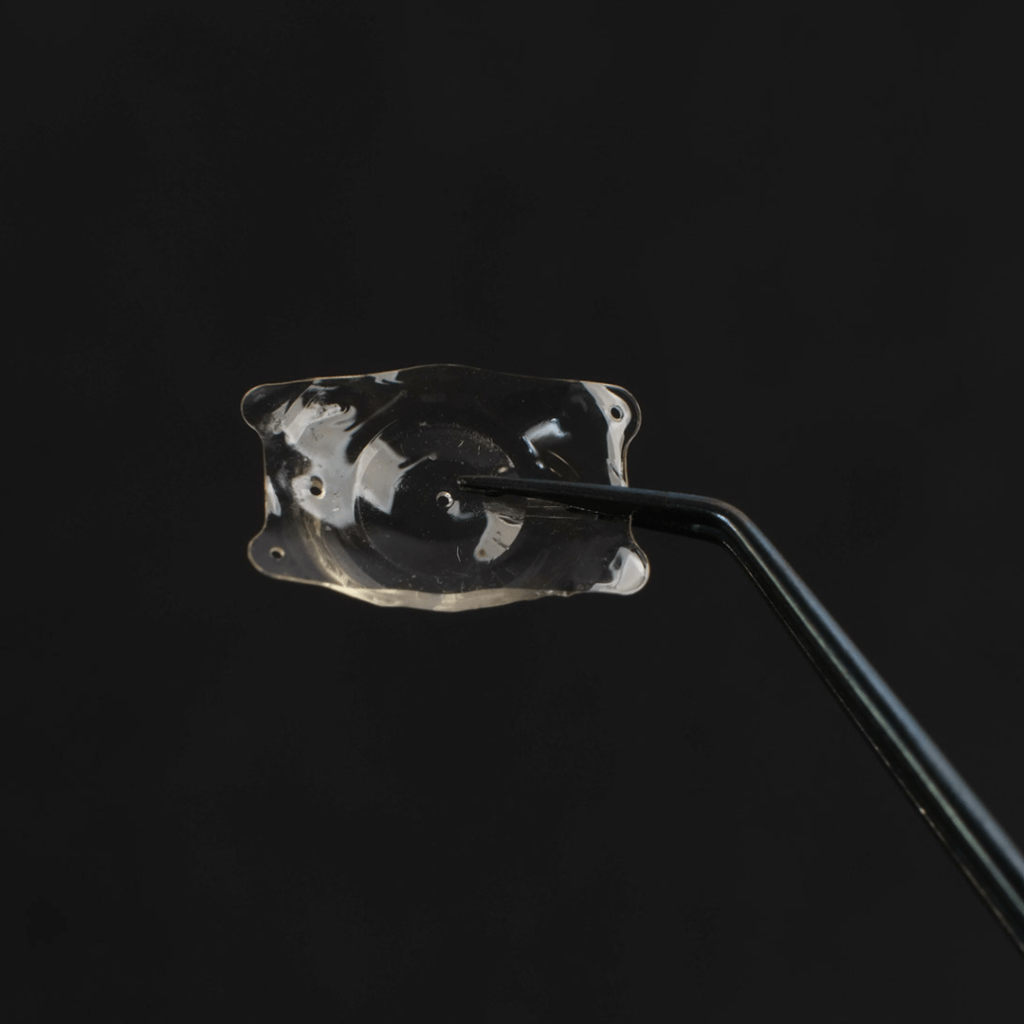Q1. What is LASIK?
LASIK (Laser-assisted in situ keratomileusis) is a refractive procedure used to get rid of glasses.

It involves making a flap in the cornea, retracting it, and then vaporizing the corneal tissue with an excimer laser. The flap is placed back in place following the procedure.
Depending on the flap, there are two types of this.
- Blade Lasik or microkeratome Lasik: The surgeon creates the flap mechanically using a tool called a microkeratome.
- Bladeless LASIK: A femtosecond laser creates the flap. Although there are fewer flap-related complications with this type, it is also more expensive.
Q2. What are the side effects of LASIK?
Every surgical procedure, even LASIK, carries a risk of complications despite being a safe procedure.
By adhering to the right indication criteria and maintaining high technical standards, including strictly sterile operative technique, in every procedure, these can be kept to a minimum.

In general, LASIK is a risk-free procedure. Dry eye is the most typical side effect. This is because the procedure causes nerve tissue to be severed, which leads to insufficient tear production.
The nerves slowly start to regenerate during which artificial tears and/or punctal plugs are used to help with the dryness. In most cases, resolution occurs within two to three months. More delicate eyes may require up to six months.
According to several studies, between 85% and 98% of patients experience dry eyes one week after treatment. When one month has passed, this percentage falls to about 60%.
Halos at night and glare are additional side effects. With LASIK eye surgery, the area of the cornea treated is larger than the size of the dilated pupil, which eliminates most night vision disturbances. Some patients may momentarily experience faint starbursts, halos, or glare around lights in low or dim light after surgery. Avoid driving at night during this time.
Q3. Could lasik result in blindness?
No. There haven’t been any reports of vision loss or blindness brought on by LASIK yet.
Lasik is a cutting-edge and sophisticated procedure and it requires extensive testing and an eye exam before it can be performed. All members of the medical team, including surgeons, optometrists, nurses, medical assistants, and technicians, must be knowledgeable in this area.
The procedure is only carried out when the candidate is a good fit, and is closely monitored afterward.
Q4. Does LASIK remove our need for glasses permanently?
LASIK usually fixes the distance glass number permanently.
In some cases however, slight refractive error may persist after the procedure. The same LASIK procedure, also known as an LASIK enhancement or LASIK retouch procedure, can be used to correct residual refractive errors after waiting for at least one month, if necessary.
Additionally, the need for reading glasses increases with age due to changes in the lens, which typically begins around the age of 40.
Q5. Does LASIK hurt?
No.
To ensure that patients don’t feel any pain during the procedure, a topical anaesthetic is administered as eye drops to numb the eye.
The patient feels a little pressure when the surgeon inserts the vacuum ring.
Both the laser and the instrument used to create precise flaps are painless. Many patients report mild foreign body sensation after the procedure which typically goes away after the first few hours.
Q6. Can LASIK correct any AMOUNT OF REFRACTIVE ERROR?
Usually, an individual with myopia of -8 to -10D, hypermetropia of +6 D, or astigmatism up to 4D is ideal for LASIK correction (depending upon the operating surgeon and technique used).
Q7. I have a higher glass number than LASIK can fix. Is there another way to remove glasses?
Yes.

Phakic IOL surgery can be performed on people with higher numbers.
In contrast to other refractive procedures, where the cornea is reshaped using a laser, phakic IOL (ICL or IPCL, etc.) involves the implantation of an intraocular lens or IOL with a calculated power in front of the natural crystalline lens and behind the iris.
Patients who are ineligible for laser refractive surgery, such as those with thin corneas, high refractive powers, or severe dryness, may undergo this procedure.
Because the IOL can be removed if necessary, ICL is the only refractive procedure that is reversible.
Q8. Who are eligible candidates for LASIK?
Refractive surgery is not medically indicated and an individual decides to get it done electively. Here is a list of criteria for an ideal laser refractive surgery candidate.
- Age between 18-40: Glass number usually stabilizes by the age of 18 years, therefore it is not recommended in individuals less than 18 years who may observe an increase in the power later.
In individuals more than 40 years of age, lens aging starts which may require them to wear reading glasses or undergo surgery in case of cataract.

- Stable glass number for 6 months-1 year: If the glass power is fluctuating, then a change in refraction after surgery will affect the postoperative outcome.
- Refractive error: Usually, an individual with myopia of -8 to -10D, hypermetropia of +6 D, or astigmatism up to 4D is ideal (depending upon the operating surgeon and technique used).
- Corneal thickness of more than 500 microns: Laser refractive surgery requires ablating the corneal surface. Therefore if the corneas are already thin, then ablating it may result in corneal thinning, a condition known as corneal ectasia.
- No dryness of eyes: This procedure itself can cause dryness. Therefore if the individual is already suffering from dry eyes, then surgery in such patients can cause severe dry eyes, which is more difficult to treat.
- No history of any recent eye infection: History of eye infection must be told to the doctor and only after the eyes are fully recovered, the procedure is done to avoid unnecessary post-op complications
Q9.How long does LASIK recovery take?
The patient usually makes a full recovery the same day, though some patients experience dryness, glare, and halos at night. Do keep in mind that during the first week you might need to use eye drops at work and take frequent breaks from your digital devices. It’s best to wait to start driving until four to five days have passed or until you are confident in your vision.
Q10. How is lasik different from PRK and smile?
| PRK/Trans PRK | LASIK | ReLEx SMILE | |
| Can be done in thin corneas | Yes | No | No |
| Laser used to reshape the cornea | Excimer | Excimer | Femtosecond |
| Flapless | Yes | No | Yes |
| Incision on cornea | No | Yes, around 20 mm or 270 degree circumference | Yes 4 mm minimally invasive |
| Post op pain | Yes | No | No |
| Post op dryness | Yes | Yes | Yes |
| Visual recovery | Long | Fast | Fast but takes longer than LASIK |
| Cost for both eyes (varies from place to place and surgeon to surgeon) | 30-40k | Standard LASIK: 30-40k Bladeless or FEMTO LASIK: 60-80k | 1-1.25 lakh |
Q11. IS LASIK ALLOWED FOR ENTRY INTO INDIAN ARMED FORCES?
The following criteria must be met by candidates who have undergone REFRACTIVE SURGERY to correct refractive error:
- Refractive surgery (PRL/LASIK/SMILE/CONTOURA) surgery should not have been carried out before the age of 20 years.
- The axial length of the eye should not be more than 25.5 mm as measured by IOL master.
- At least 12 months should have elapsed post uncomplicated stable PRK/ LASIK with no history or evidence of any complication.
- The post PRK/ LASIK corneal thickness as measured by a corneal pachymeter should not be less than 450 microns.
- High refractive errors (>6D) prior to refractive surgery are excluded.
- Stable refraction for a period of six months after the procedure.
- Those who underwent RK (radial keratotomy) surgery for correction of refractive errors will be disqualified.
Q12. Can I have lasik after the age of 40?
After the age of 40, the lens begins to lose its focussing ability, making reading glasses necessary to see clearly up close.
Due to the fact that Lasik is performed for distance vision, reading glasses are still necessary.
Presbyopia is frequently treated with optical correction because it is non-invasive, simple, and affordable.
To avoid wearing glasses, one can opt for surgical correction. Surgical options become available as a result of the current focus on a permanent and aesthetically pleasing solution. Among the most recent advancements in presbyopia treatment are the following methods and procedures:
1 Monovision laser ablation
2 Presbylasik
3 Presbyond
4 Refractive lens exchange
5 Corneal inlays
Q13. Does health insurance cover lasik surgery?
Most health insurance policies do not cover elective cosmetic surgery like LASIK, but some do if the patient has a refractive error of greater than 5D.
